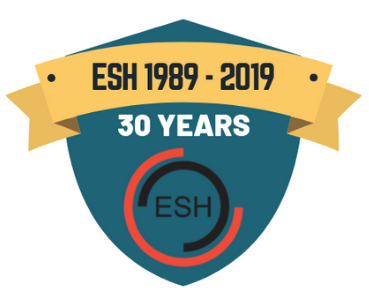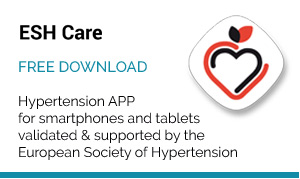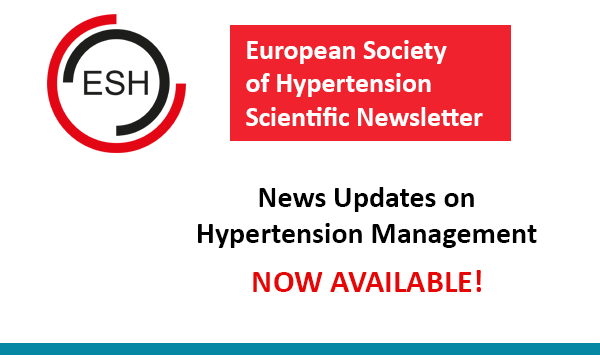2018 ESC/ESH Guidelines for the management of arterial hypertension were presented at the 28th Scientific Meeting of the European Society of Hypertension in Barcelona.
The Task Force for the management of arterial hypertension of the European Society of Cardiology (ESC) and the European Society of Hypertension (ESH).
Authors/Task Force Members: Bryan Williams* (ESC Chairperson) (UK), Giuseppe Mancia* (ESH Chairperson) (Italy), Wilko Spiering (The Netherlands), Enrico Agabiti Rosei (Italy), Michel Azizi (France), Michel Burnier (Switzerland), Denis L. Clement (Belgium), Antonio Coca (Spain), Giovanni de Simone (Italy), Anna Dominiczak (UK), Thomas Kahan (Sweden), Felix Mahfoud (Germany), Josep Redon (Spain), Luis Ruilope (Spain), Alberto Zanchetti† (Italy), Mary Kerins (Ireland), Sverre E. Kjeldsen (Norway), Reinhold Kreutz (Germany),
Stephane Laurent (France), Gregory Y. H. Lip (UK), Richard McManus (UK), Krzysztof Narkiewicz (Poland), Frank Ruschitzka (Switzerland),
Roland E. Schmieder (Germany), Evgeny Shlyakhto (Russia), Costas Tsioufis (Greece), Victor Aboyans (France), Ileana Desormais (France)
 View the 2018 ESC/ESH Guidelines for the management of arterial hypertension
View the 2018 ESC/ESH Guidelines for the management of arterial hypertension
Table of contents: Full Text
1 Preamble
2 Introduction
2.1 What is new and what has changed in the 2018 European Society of Cardiology/European Society of Hypertension arterial hypertension Guidelines?
3 Definition, classification, and epidemiological aspects of hypertension
3.1 Definition of hypertension
3.2 Classification of blood pressure
3.3 Prevalence of hypertension
3.4 Blood pressure relationship with risk of cardiovascular and renal events
3.5 Hypertension and total cardiovascular risk assessment
3.6 Importance of hypertension-mediated organ damage in refining cardiovascular risk assessment in hypertensive patients
3.7 Challenges in cardiovascular risk assessment.
4 Blood pressure measurement
4.1 Conventional office blood pressure measurement
4.2 Unattended office blood pressure measurement
4.3 Out-of-office blood pressure measurement
4.4 Home blood pressure monitoring
4.5 Ambulatory blood pressure monitoring
4.6 Advantages and disadvantages of ambulatory blood pressure monitoring and home blood pressure monitoring
4.7 White-coat hypertension and masked hypertension
4.8 Screening for the detection of hypertension
4.9 Confirming the diagnosis of hypertension
4.10 Clinical indications for out-of-office blood Pressure measurements
4.11 Blood pressure during exercise and at high altitude
4.12 Central aortic pressure.
5 Clinical evaluation and assessment of hypertension-mediated organ damage in patients with hypertension
5.1 Clinical evaluation
5.2 Medical history
5.3 Physical examination and clinical investigations
5.4 Assessment of hypertension-mediated organ damage
5.4.1 Using hypertension-mediated organ damage to help stratify risk in hypertensive patients
5.5 Characteristics of hypertension-mediated organ damage
5.6 Hypertension-mediated organ damage regression and cardiovascular risk reduction with antihypertensive treatment
5.7 When to refer a patient with hypertension for hospital-based care
6 Genetics and hypertension.
7 Treatment of hypertension
7.1 Beneficial effects of blood pressure-lowering therapy in hypertension
7.2. When to initiate antihypertensive treatment
7.3 Blood pressure treatment targets
7.4 Treatment of hypertension
7.5. Pharmacological therapy for hypertension
7.6 Device-based hypertension treatment
8 Hypertension in specific circumstances
8.1 Resistant hypertension
8.2 Secondary hypertension.
8.3 Hypertension urgencies and emergencies
8.4 White-coat hypertension
8.5 Masked hypertension
8.6 Masked uncontrolled hypertension
8.7 Hypertension in younger adults (age <50 years)
8.8 Hypertension in older patients (age >_65 years)
8.9 Women, pregnancy, oral contraception, and hormone-replacement therapy
8.10 Hypertension in different ethnic groups
8.11 Hypertension in diabetes mellitus
8.12 Hypertension and chronic kidney disease
8.13 Hypertension and chronic obstructive pulmonary disease
8.14 Hypertension and heart disease
8.15 Cerebrovascular disease and cognition
8.16 Hypertension, atrial fibrillation, and other arrhythmias
8.17 Hypertension and vascular disease
8.18 Hypertension in valvular disease and aortopathy
8.19 Hypertension and sexual dysfunction
8.20 Hypertension and cancer therapy
8.21 Perioperative management of hypertension
9 Managing concomitant cardiovascular disease risk
9.1 Statins and lipid-lowering drugs
9.2 Antiplatelet therapy and anticoagulant therapy
9.3. Glucose-lowering drugs and blood pressure
10 Patient follow-up
10.1 Follow-up of hypertensive patients
10.2 Follow-up of subjects with high–normal blood pressure And white-coat hypertension
10.3 Elevated blood pressure at control visits
10.4 Improvement in blood pressure control in hypertension: drug adherence.
10.5 Continued search for asymptomatic hypertension-mediated organ damage
10.6 Can antihypertensive medications be reduced or stopped?
11 Gaps in the evidence
12 Key messages
13 ‘What to do’ and ‘what not to do’ messages from the Guidelines
14 Appendix.
15 References






